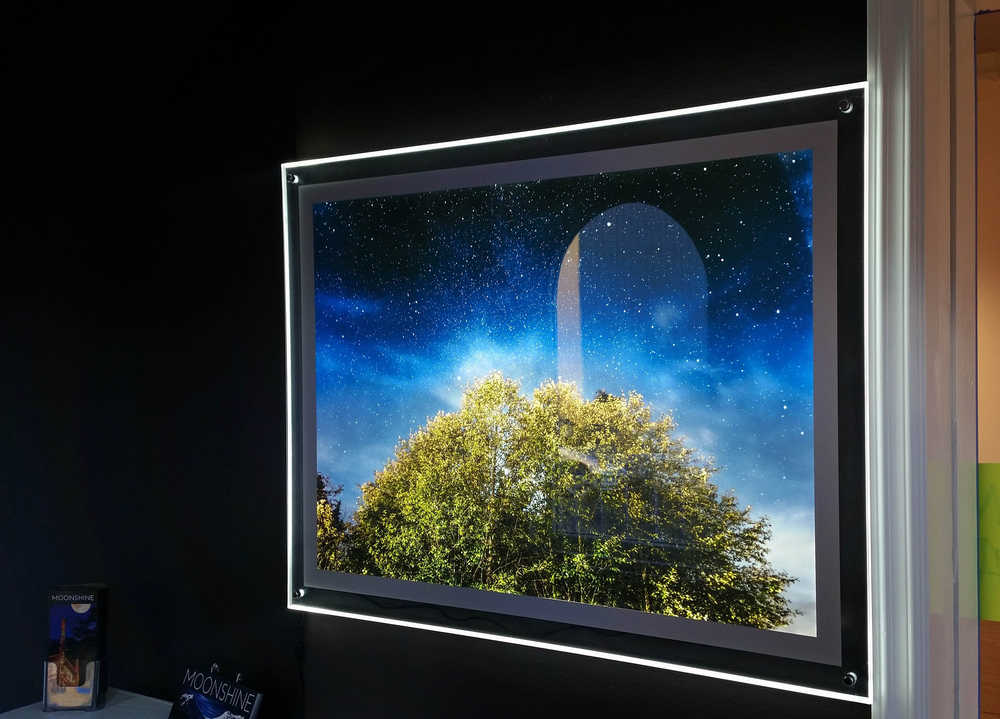Felix A. Wong, originally from Singapore, is a self-taught Ketchikan photographer with a passion for nighttime photography. This November he has made his debut with his exhibit “Moonshine” at Ketchikan Area Arts & Humanities Council’s Main Street Gallery.
The eight pieces show the town’s landscapes — some streaked by the aurora borealis or bathed in moon and starlight, while others are branded by the Milky Way like a celestial highway.
Wong will give a presentation on “Moonshine” at 6:30 p.m. Thursday, Nov. 17 at the gallery and discuss his nighttime photography process. The Capital City Weekly was able to catch up with him to discover the story behind his exhibit, the allure of the night sky lights, and to learn what he’s working on next.
Editor’s note: This interview has been edited for clarity and length.
What do you enjoy about photography in Alaska versus other places you’ve taken pictures?
Alaska has this raw, untouched beauty that surrounds us. Unlike other cities or towns where things are well kept and manicured, all that effort almost seems futile with the power of the elements here.
With photography, I get to be a visual historian. I get to witness then show people what a certain place is like at the time. I get to learn how to find interest in the mundane, find beauty in something that gets no passing thought by someone else. I get to observe.
What draws you to nighttime photography?
As a young child, I grew up with books about astronomy and educational TV shows by individuals like Carl Sagan who have instilled a passion for space exploration and science.
Having grown up in the city-state of Singapore, which has a massive population for its land size, I was never really able to get to a spot that has zero light pollution, with no clouds or particles catching artificial light and blocking the view of a starry night sky.
So imagine the feeling of elation I had when I discovered I could just drive no more than 30 to 45 minutes to get to a dark area here in Ketchikan, away from city limits and street lights to see the Milky Way, shooting stars, satellites and other space debris, and of course, the Aurora Borealis.
On the technical side, what’s the difference between daytime photography and nighttime photography? What do beginning photographers need to know?
In terms of exposing for daytime versus nighttime images, it’s a matter of increasing ISO and exposure time. Once the scene is exposed, you’ll find that the moon is indeed reflecting sunlight because color balancing and post-production treatment in Lightroom feels almost as if it’s a daytime photo.
How did the chance to exhibit at the Main Street Gallery come about?
I’ve been sharing images on social media, especially on Facebook, because I love showing off the spectacular natural beauty we get to live in the middle of here in Southeast.
Most of my friends are from Singapore and they either haven’t left the country before, or they haven’t visited places that are as raw and rural as Alaska.
After about a year of sharing photos and adding local Ketchikan friends on Facebook, I think I started gaining traction and recognition as a capable photographer. It was this spring or last December when some of the staff from the Ketchikan Area Arts and Humanities Council contacted me directly and convinced me to register for their call for artists where I decided to finally put my photos in physical print and have a solo showing of my work.
How did you come up with the concept for your exhibit?
Living in Ketchikan, a.k.a. Rain City, it gets cloudy and/or rainy most nights; rainy and cold.
Also, Ketchikan being a largely working town, most of the people here need to go to bed early to be effective as they always are at work.
So I decided to try and capture the awe and wonder of the night sky and present them in the warm dry comfort of a gallery exhibit that is accessible during the day.
Since many of my images either feature the moon or landscape lit by moonlight, I decided to name it “Moonshine” to play with the word which also happens to connect with Ketchikan’s checkered Prohibition Era past.
Are there any big photography projects for you in the future?
Yes, I do intend to do more big photography projects eventually. I’ve always loved the challenge of making my images translate well when blown up.
I would love to try extended exposures to smooth out movement in the sky or water, then render them in a more subdued black-and-white look as opposed to the punchy and glorious Ansel Adams look.
If someone wants to see more of your photography, where should they go?
For now, I primarily share my images on my personal Facebook page. I intend to set up a webpage to make photo browsing easier.

